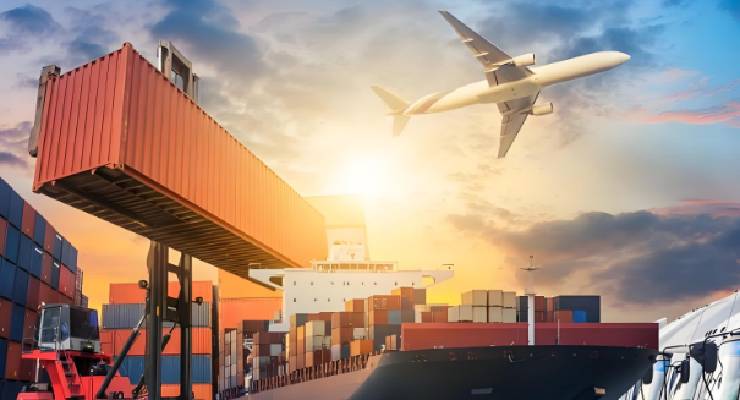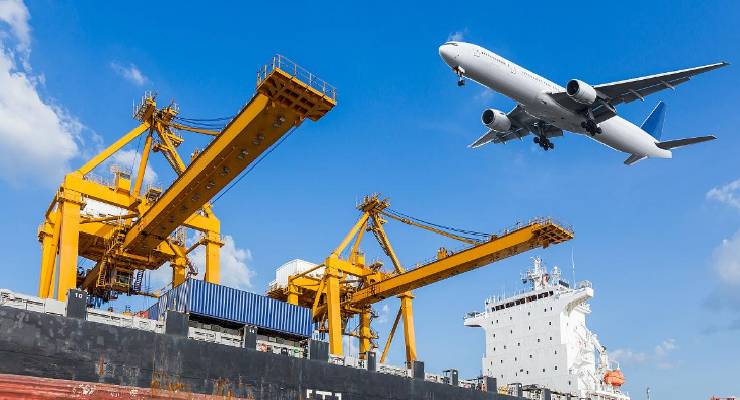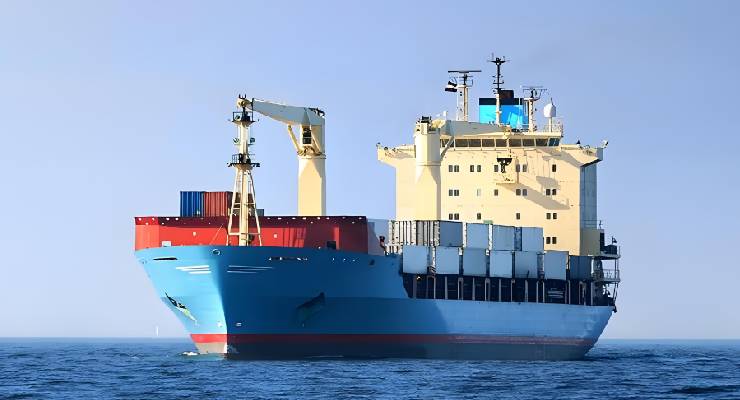
Transporting goods from China to Tanzania is a common problem faced by many foreign trade enterprises and individuals, and choosing the right mode of transportation needs to take into account the characteristics of the goods, the degree of urgency and the cost budget. This article will comprehensively analyze the shipping time of sea, air and express services from China to Tanzania to help you make the best choice according to your actual needs. We will start with the basic timeliness of different modes of transportation, analyze in detail the various factors that affect the transportation time, and provide practical optimization suggestions, and finally give professional transportation solutions for special goods. Whether you need to ship bulk goods or urgent documents, this guide can provide you with valuable reference information.
Sea freight timeliness and service selection
As the most commonly used mode of transportation from China to Tanzania, sea transportation has become the first choice for bulk cargo transportation with its advantages of economy and large capacity. The shipping time from major Chinese ports (such as Shanghai, Shenzhen Yantian, Ningbo, etc.) to Dar es Salaam port in Tanzania is usually between 20-45 days, depending on the route, shipping company and seasonal factors. This transport process can be divided into several key stages:
Processing from the start: It usually takes 1-3 business days to assemble, pack and prepare documents. This "invisible time" is often overlooked, but adequate preparation can significantly reduce the risk of subsequent delays.
Sea freight: This is the longest stage of the whole process, with a pure sailing time of about 20-30 days depending on the route. Direct routes are faster, while routes that require transit at ports such as Singapore and Colombo can be extended to 35-45 days. It is worth noting that voyage times vary between different shipping companies, such as COSCO and PIL routes are generally more efficient and reliable than some smaller shipping companies.
Port of destination clearance: The efficiency of customs clearance in Tanzania directly affects the overall timeliness and usually takes 5-10 days. When documentation is incomplete or goods need to be inspected, the process may extend to more than 2 weeks. Preparing complete customs clearance documents (including commercial invoices, packing lists, certificates of origin, etc.) in advance can significantly reduce customs clearance time.
Inland delivery: Land transport from Dar es Salaam port to inland destinations in Tanzania takes 1-7 days, with the longer the distance from the port. Tanzania's road infrastructure is relatively poor and deteriorating road conditions during the rainy season can lead to further delays.
The key factors affecting shipping times are many and complex: weather conditions (especially sea conditions during the Indian Ocean monsoon season), the political situation (regional conflicts can alter routes), the level of port congestion (aging equipment at Dar es Salaam often leads to delays), shipping schedules (the distinction between direct and transit), and the characteristics of the cargo itself (special goods require additional inspection). For example, during the Northeast monsoon from November to March each year, shipping times increase by an average of 3-5 days.
Optimization suggestion: For large goods with low time sensitivity, sea transport is undoubtedly the most economical choice. To ensure maximum timeliness, it is recommended to choose a reputable shipping company, avoid shipping during the monsoon season, prepare complete customs clearance documents in advance, and consider purchasing Marine insurance to avoid the risk of delays. At the same time, working with experienced freight forwarders, who are familiar with the actual operating performance of each shipping company and the latest route adjustments, can provide a more time-guaranteed transportation solution.

Air freight timeliness and service selection
When time is of the essence, air transport becomes the preferred option for cargo transportation from China to Tanzania. Compared with sea transport, although the cost of air transport is higher, its speed advantage is unparalleled. The air transport time from major Chinese airports such as Beijing, Shanghai and Guangzhou to Tanzania (the main destination is Dar es Salaam International Airport or Kilimanjaro International Airport) is usually 3-7 working days, which includes the whole process of origin processing, air transport, destination port clearance and final distribution.
The time difference of air transport services is mainly due to the following factors:
Type of flight: Direct flights can usually be completed in 3-5 business days, while flights requiring a connection (usually Nairobi or Doha) can take 5-7 business days. For example, China Southern Airlines' direct flight from Guangzhou to Dar es Salaam takes only about 12 hours of flight time, and with front and back end processing, the overall time is very competitive.
Service level: There are obvious time differences between ordinary air freight and express air freight. International Courier giants such as DHL and FedEx provide Tanzanian Courier services that typically promise delivery within 4-6 working days, with the advantage of having an autonomous air network and efficient customs clearance teams. Traditional air cargo relies on commercial flights and is more affected by flight schedules.
Customs clearance efficiency: The clearance of air cargo is usually faster than that of sea freight, but it still takes 1-3 working days. Poor preparation of documents can lead to serious delays, so commercial invoices, packing lists, air waybills, etc. must be complete and accurate. Special goods such as pharmaceuticals and electronics may require additional licenses.
In terms of cost composition, the calculation of air freight price is more complicated, mainly based on the following factors: the actual weight of the cargo and the larger of the volume weight (volume weight calculation formula: length × width × height cm/6000), the popularity of the route, fuel surcharge fluctuations and service type selection. Taking the market in March 2025 as an example, the price of ordinary air freight from Shanghai to Les Salaam is about $5-8 per kilogram, while the Courier service is between $7-12, depending on the volume and level of service.
In terms of major airlines and routes, air services from China to Tanzania are mainly provided by Ethiopian Airlines (via Addis Ababa), Qatar Airways (via Doha), Kenya Airways (via Nairobi) and China Southern Airlines and Air China. Among them, China Southern's Guangzhou-Dar es Salaam direct route performed best in terms of timeliness and stability.
Optimization recommendation: For high-value, time-sensitive cargo, air freight is the most reliable choice. To control costs, consider the following strategies: plan ahead to avoid peak air cargo seasons (such as around Christmas), consolidate small shipments into large shipments to get preferential rates, and choose off-peak flights (typically with lower rates from Tuesday to Thursday). At the same time, be sure to confirm the customs clearance requirements of the destination port, and apply for the necessary certificates for special goods in advance to avoid offsetting the speed advantage of air transport due to customs clearance problems.
Comprehensive analysis of key factors affecting transportation time
Whether you choose sea, air or Courier services, the transit time of goods from China to Tanzania is affected by a complex set of factors. Understanding these factors can help you avoid risk in advance, plan your time wisely, and quickly locate problems when delays occur. Through the comprehensive analysis of the commonness and characteristic factors of each mode of transportation, we can establish a comprehensive time-effectiveness evaluation framework to provide guidance for practical operation.
The seasonal factors have the most significant and regular influence on the transportation time. In terms of shipping, the South Asian monsoon season from June to September and the Northeast monsoon period from November to March every year, the Indian Ocean is stormy, and ships may slow down or change routes, resulting in an average increase in shipping time of 3-7 days. Air transportation is affected by the peak freight traffic before and after the Chinese Spring Festival (January-February) and the Western Christmas (December), and the flight space is tight, not only the freight price rises, but also the time limit may be extended by 2-5 days. The rainy season (Tanzania's "long rainy season" March-May and "short rainy season" November-December) is particularly severe for road transport within Tanzania, with delivery times from ports to the interior potentially 50% to 100% longer than during the dry season.
The limitation of logistics infrastructure is the deep-seated factor that affects the timeliness of logistics in Tanzania. Dar es Salaam Port, as the most important cargo gateway in Tanzania, has long faced the problem of aging equipment and insufficient berths, and the average waiting time for ships to berthing is 3-5 days, significantly longer than other major ports in East Africa. The country's road network is uneven, with good trunk roads between major cities, but poor access to the interior and frequent disruptions during the rainy season. The unstable power supply also affects the operational efficiency of ports and warehouses. These infrastructure bottlenecks mean that even if international transport is smooth, the movement of goods within Tanzania can take an unexpectedly long time.
Customs clearance efficiency is another highly uncertain time effect factor. The clearance time of Tanzanian customs is usually 3-10 working days, but there is a lot of volatility. The following conditions may cause delays in customs clearance: incomplete documentation (lack of certificates of origin, import permits, etc.); The product requires TBS (Tanzania Standards Authority) certification but has not been processed in advance; The goods are extracted for physical inspection; Tariff valuation dispute; And Tanzania's unique "systemic delay" - process delays caused by inefficient work. It is worth noting that there are also differences in the speed of customs clearance between different modes of transport, and air cargo is usually faster than sea cargo clearance due to the smaller volume and higher value of air cargo, which is given higher priority by customs.
Political and policy factors, while infrequent, can cause significant delays when they do arise. The political situation in Tanzania is relatively stable, but during elections (usually every five years) there may be increased customs checks and extended clearance times. Trade policy adjustments in the East African Community, changes in bilateral relations between China and Tanzania, and the tightening of foreign exchange control policies in Tanzania may affect the efficiency of customs clearance for specific commodities. The risk of public emergencies such as the 2020 coronavirus border-control measures that doubled the transit time from China to Tanzania still needs to be taken into account.
In terms of optimization strategy, based on the analysis of the above factors, we propose to take the following measures to control the risk of transportation time: avoid the monsoon season and holidays and other peak periods of delivery; Select logistics service providers with good customs clearance agents in Tanzania; Apply for TBS certification and other necessary documents in advance; (a) Consider a hybrid "air-sea" option for emergency cargo (by sea to Dubai or Nairobi and then by air to Tanzania); And reserve a minimum 15-20% time buffer for critical transportation tasks. At the same time, the purchase of freight insurance that covers transport delays is also an effective means of spreading risk, especially for high-value or time-sensitive cargo.

Transport mode selection strategy and practical suggestions
In the face of diversified transportation modes and complex time factors from China to Tanzania, it is crucial to formulate a scientific selection strategy to balance time, cost and risk. Based on the previous analysis, this part will provide a decision-making framework for transportation schemes in different business scenarios, as well as practical suggestions for optimizing transportation timeliness, to help users make the best choice that meets their needs.
The decision-making framework should be based on a systematic assessment of cargo characteristics, business requirements and constraints. We recommend considering the following four dimensions:
Time-sensitive: Goods are classified into "urgent" (within 7 days), "standard" (7-30 days) and "non-urgent" (more than 30 days) categories according to the time critical point. Emergency cargo such as medical supplies, machinery spare parts should choose to air or international express; Standard goods such as retail stock, general machinery suitable for shipping containers; Non-emergency cargo such as building materials, bulk raw materials can choose the most economical sea cargo or LCL service.
Cargo value density: Calculate the ratio of cargo value to weight (USD/kg). High value density goods (such as electronic products, jewelry) are usually suitable for air transport, although the unit cost is high but the capital occupation time is short; Low-value density goods (such as furniture, building materials) are suitable for sea transport, even if the transportation time is long, the total cost advantage is still obvious.
Cargo characteristics and compliance requirements: For the aforementioned special goods, professional transportation schemes such as temperature control and dangerous goods need to be considered. The cost and time input of this part are rigid, and the decision-making space is relatively limited.
Supply chain strategy: Companies need to assess the impact of transportation choices on the overall supply chain. Enterprises with JIT (just-in-time) inventory strategies need more efficient and reliable transportation services; Enterprises that adopt buffer inventory strategy can choose more economical transportation mode and exchange inventory cost for transportation cost savings.
Whether it is sea, air or rail transportation, each mode has its unique advantages. The key is to choose the most suitable service according to the demand, budget and timeliness requirements of the goods. At the same time, the optimization of customs clearance and transportation timeliness can also help you shorten the overall transportation time and improve logistics efficiency.
If you need more information about freight from China to Tanzania, you can contact Winsail Logistics for a detailed quote and personalized logistics plan.
Ocean freight service SOLAR PANEL from CHINA to KENYA
Sea freight from China to Kenya
-
 A Comprehensive Guide to Refrigerated ContainersJun 17,2025
A Comprehensive Guide to Refrigerated ContainersJun 17,2025 -
 Guide to 20ft & 40ft Shipping Container Dimensions for Global LogisticsJun 17,2025
Guide to 20ft & 40ft Shipping Container Dimensions for Global LogisticsJun 17,2025 -
 How to track shipments sent from ChinaMay 13,2025
How to track shipments sent from ChinaMay 13,2025 -
 Guide to Importing and Shipping Cars from China to UAEMay 13,2025
Guide to Importing and Shipping Cars from China to UAEMay 13,2025 -
 Guide to Importing and Shipping Camping Gear from ChinaMay 07,2025
Guide to Importing and Shipping Camping Gear from ChinaMay 07,2025 -
 Shipping from China to YemenMay 06,2025
Shipping from China to YemenMay 06,2025

